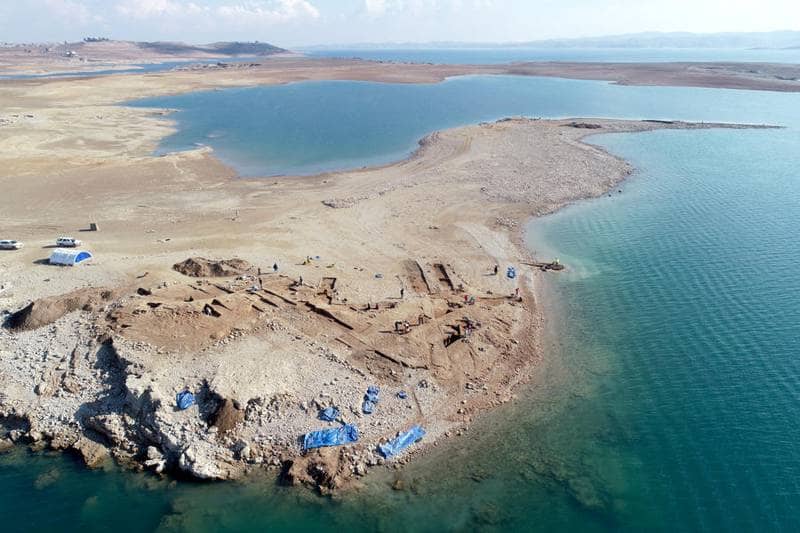Race against time to map a 3,400-year-old Iraqi city before it disappeared underwater
01 June, 2022

An Iraqi-German archaeological team raced against time to excavate and document a Bronze Age city in northern Iraq before it disappeared underwater.
As drought caused water levels to recede in the Mosul Dam's reservoir last winter, the remains of a 3,400-year-old Mittani Empire-era city once located on the Tigris emerged, an Iraqi official told The National on Tuesday.
The Mittani Empire was a kingdom that ruled parts of Syria and northern Mesopotamia, modern day Iraq, from the 15th century to the 14th century BC. The city, known as Zakhiku, is at Kemune in the northern Kurdistan Region of Iraq. The team started excavating the city in 2018, when they revealed what was probably a palace with large walls, Dr Hasan Qasim, chairman of the Kurdistan Archaeology Organisation, said.
Fifteen clay tablets with cuneiform writing were also unearthed at the time, Dr Qasim said.
In 2019, the team discovered the walls were seven metres high and inside were chambers that had once been decorated with painted murals.
To cope with extreme drought in southern Iraq and in order to secure enough water for crops, authorities released more water from Mosul Reservoir in December, allowing the ruins to re-emerge.
“This unforeseen event put archaeologists under sudden pressure to excavate and document at least parts of this large, important city as quickly as possible before it was resubmerged,” said the University of Tubingen.
A team was put together within days and received funding from the Fritz Thyssen Foundation through the University of Freiburg.
Throughout January and February, the team managed to map the city and a massive fortification with wall and towers, a multistorey storage building and an industrial complex, Dr Qasim said. More than 200 clay tablets were found.
“The excavation results show that the site was an important centre in the Mittani Empire,” Dr Qasim said.
“The huge magazine building is of particular importance because enormous quantities of goods must have been stored in it, probably brought from all over the region,” Prof Ivana Puljiz of the University of Freiburg said.
“The research team was stunned by the well-preserved state of the walls — sometimes to a height of several metres — despite the fact that the walls are made of sun-dried mud bricks and were underwater for more than 40 years.”
The city was destroyed in an earthquake in about 1350BC, the archaeological team said, during which the collapsing upper parts of the walls buried the buildings, preserving what remained.
Five ceramic vessels that contained an archive of over 100 cuneiform tablets from the Middle Assyrian period, shortly after the earthquake disaster struck the city, are an important find.
“It is close to a miracle that cuneiform tablets made of unfired clay survived so many decades under water,” Peter Pfalzner of the University of Tubingen said.
The site is now submerged with water again but the excavated buildings were completely covered with tightly fitting plastic sheeting and with gravel fill to protect them.
The fluctuating reservoir levels highlight water shortages in Iraq. The war-ravaged country is ranked by the UN as the fifth most vulnerable country in the world to the effects of climate change.
Dr Qasim told The National that more than 500 archaeological sites emerged from underwater as a result of the drought and receding levels on the eastern bank of the Tigris within the borders of Kurdistan region. They are still unexcavated. Iraq faces a wide range of challenges made worse by water insecurity, mismanagement and man-made problems such as the illegal clearing of agricultural areas to build houses.
More frequent and intense droughts, sandstorms, heatwaves and rising sea levels are wreaking havoc on people's livelihoods and communities.
Source: www.thenationalnews.com
